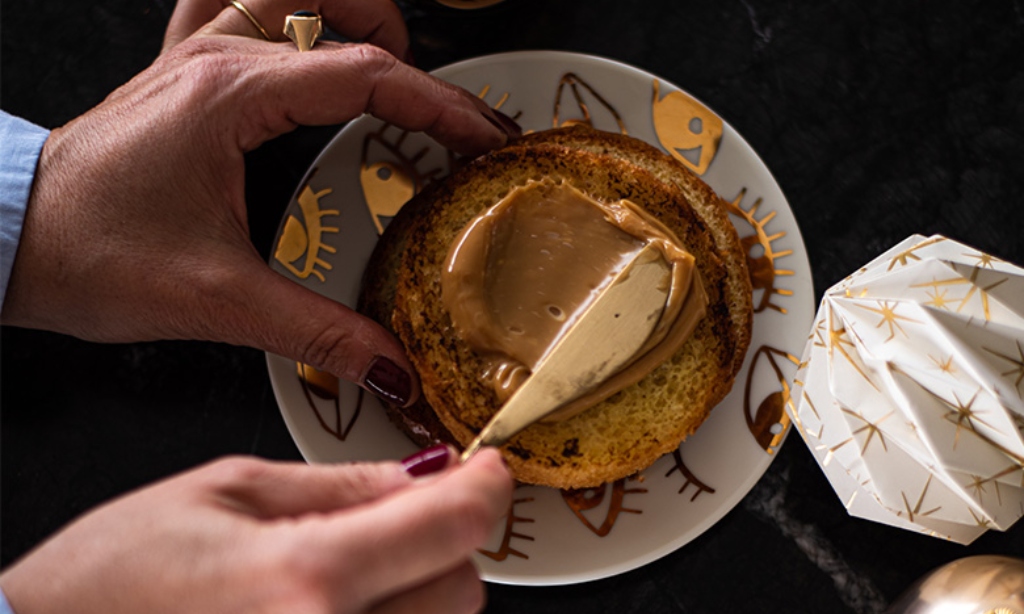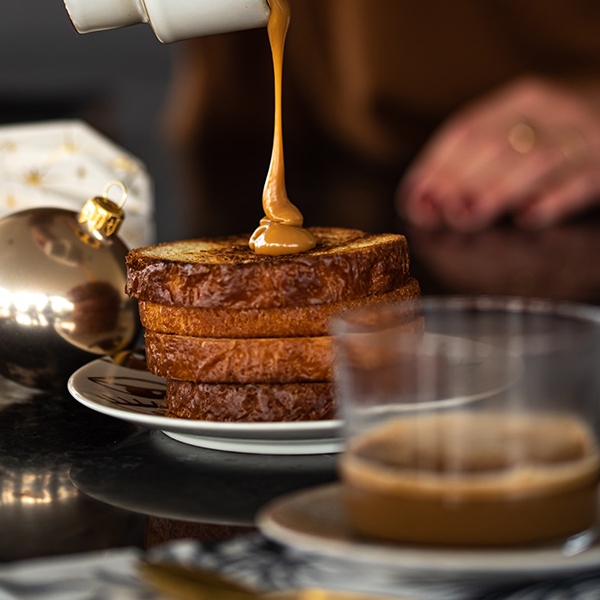Cook with us: dulce de leche

You know how much we value time…so why not dedicating a special moment to preparing this dreamy spread during these holidays? It will be great to sweeten your winter afternoons and nights, with its rich gooey milk flavor.
The dulce de leche is a thick sweet cream obtained by heating milk and sugar. It has a signature brownish-hazelnut color and a recognizable taste. It can be enjoyed as it is, or as ingredient for cakes, cupcakes, cookies, icecreams…and even to enrich our favorite hot beverages.



The legend behind
Dulce de leche comes from Argentina, where it was enjoyed originally as a dessert. From there, it diffused all over Latin America, and then worldwide. The literal translation of the name is “milk preserve” as the procedure to make it resembles the one to make fruit jam, with milk instead of fruits.
There are many stories regarding the events that led to the creation of the “dulce de leche”. The most accepted one is about the Argentinian autocrat Juan Manuel de Rosas, in 19th Century.
The story tells that, during a winter afternoon, his maid was making the lechada (a milk and sugar-based drink that is boiled until caramelized) when she was suddenly interrupted by somebody knocking on the house door. She went checking who it was, and she left the lechada on the stove. When she came back in the kitchen, the lechada has turned into a cream because of the long heating. The dulce de leche was born.
How to make it
Making the “dulce de leche” is not difficult, but the preparation is long and requires almost one hour. Ingredients are just a few and easy to find:
• 33 oz whole milk • a vanilla pod • 1 tsp of baking soda • 1 cup ½ (300 gr) caster sugar
Take the seeds out of the vanilla pod after cutting it in the middle and put them into a pot filled with milk. If you do not have a vanilla pod, you can use vanilla extract. Add sugar and baking soda and put on the stove on a medium heat. When boiling, reduce the heat and take the lid off. Stir every now and then, until it is thick and caramelized. To check if it has reached the correct texture, take a spoonful, and pour on a dish. If it does not run when tilting the dish, it is ready!
How to enjoy it
Now you can simply spread the dulce de leche on toast, or you can use it for many recipes. For example, it can be an ingredient for your next cake or cupcakes, or a topping for ice-creams or for a morning porridge. Our suggestion is also to try adding a teaspoon of it in your usual cup of coffee or cappuccino to give it a nice and sweet taste.
Photos by Gaia Menchicchi | Recipe by Diletta Maria Secco
 Truly Italian Roots
Truly Italian Roots